I am trying to implement SSAO based on this tutorial: http://john-chapman-graphics.blogspot.com/2013/01/ssao-tutorial.html. I don't seem to understand how to achieve this and I keep getting undesired results in my fragment shader.
First I setup my shader to pass in the depth buffer, camera's projection matrix and 4x4 noise texture. The ssao kernel has already been initialized and passed into the shader as well. I also sample the normal from the depth buffer.
EDIT: At first I thought I was getting the depth position incorrectly so I added a new function called positionFromDepth, but it still doesn't seem to work...
My fragment shader:
uniform sampler2D uDepthBuffer;
uniform sampler2D uNoiseTexture;
uniform mat4 uProjection; // camera's projection matrix
uniform mat4 uInverseMatrix; // inverse of projection matrix
uniform vec2 uNoiseScale; // vec2(1024.0 / 4.0, 768.0 / 4.0)
const int MAX_KERNEL_SIZE = 128;
uniform int uSampleKernelSize;
uniform vec3 uSampleKernel[MAX_KERNEL_SIZE];
uniform float uRadius;
const float zNear = 0.1;
const float zFar = 2579.5671;
float linearizeDepth(float near, float far, float depth) {
return 2.0 * near / (far + near - depth * (far - near));
}
vec3 positionFromDepth(vec2 texcoords) {
float d = linearizeDepth(zNear, zFar, texture2D(uDepthBuffer, texcoords).r);
vec4 pos = uInverseMatrix * vec4(texcoords.x * 2.0 - 1.0,
texcoords.y * 2.0 - 1.0,
d * 2.0 - 1.0, 1.0);
pos.xyz /= pos.w;
return pos.xyz;
}
vec3 normal_from_depth(float depth, vec2 texcoords) {
const vec2 offset1 = vec2(0.0, 0.001);
const vec2 offset2 = vec2(0.001, 0.0);
float depth1 = linearizeDepth(zNear, zFar, texture2D(uDepthBuffer, texcoords + offset1).r);
float depth2 = linearizeDepth(zNear, zFar, texture2D(uDepthBuffer, texcoords + offset2).r);
vec3 p1 = vec3(offset1, depth1 - depth);
vec3 p2 = vec3(offset2, depth2 - depth);
vec3 normal = cross(p1, p2);
normal.z = -normal.z;
return normalize(normal);
}
void main() {
vec2 texcoord = gl_TexCoord[0].st;
vec3 origin = positionFromDepth(texcoord);
float d = texture2D(uDepthBuffer, texcoord).r;
vec3 normal = normal_from_depth(linearizeDepth(zNear, zFar, d), texcoord) * 2.0 - 1.0;
normal = normalize(normal);
vec3 rvec = texture2D(uNoiseTexture, texcoord * uNoiseScale).rgb * 2.0 - 1.0;
vec3 tangent = normalize(rvec - normal * dot(rvec, normal));
vec3 bitangent = cross(normal, tangent);
mat3 tbn = mat3(tangent, bitangent, normal);
float occlusion = 0.0;
for(int i = 0; i < uSampleKernelSize; i++) {
vec3 sample = tbn * uSampleKernel[i];
sample = sample * uRadius + origin.xyz;
vec4 offset = vec4(sample, 1.0);
offset = uProjection * offset;
offset.xy /= offset.w;
offset.xy = offset.xy * 0.5 + 0.5;
float sampleDepth = positionFromDepth(offset.xy).z;
occlusion += (sampleDepth <= sample.z ? 1.0 : 0.0);
}
occlusion = 1.0 - (occlusion / float(uSampleKernelSize));
gl_FragColor = vec4(pow(occlusion, 4.0));
}
The occluded samples changes when I move my camera around. The result looks something like this:

I am assuming I am doing something wrong when sampling the depth position, but maybe I am doing something wrong with the projection matrix as well. Should the uProjection matrix be transposed or inverted? Can anyone identity the issue?
Also ignore the fact that I haven't done a blur pass yet.